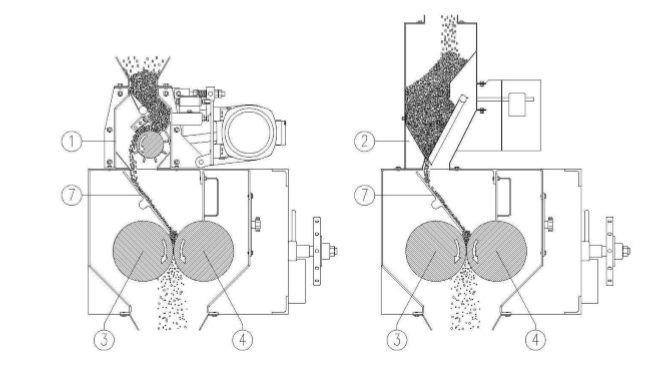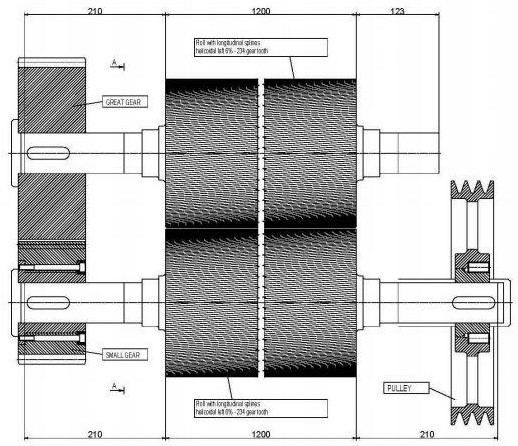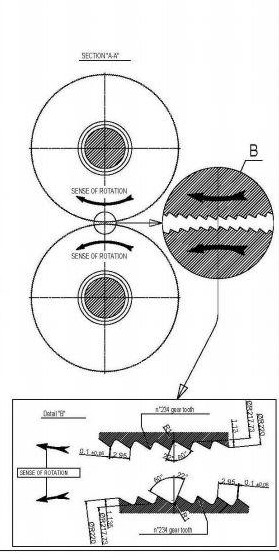The crumbling process
A crumbler is a roller mill with rolls specially designed for crumbling feed pellets, as well as in the flour milling, oilseed processing and biomass production industries for coarse/fine grinding. Its objective is to produce crumbled feed to control reduction to a specific particle size with a minimum of fines. In some applications, the crumbler can even replace a hammer mill offering an extraordinarily cost-efficient grinding solution and saving money.

The dosing system allows the required throughput to be selected easily and ensures uniform flow of material to the rolls. We can distinguish between crumbler with roll feeder or gravity feeder.
The pellets can then be diverted into the crumbler, if crumbles or granules are desired, or they can by-pass it. The roll spacing adjustment controls the sizing or degree of crumbling of the product, instead the by-pass valve, operated by pneumatic piston, directs the pellets around the outside of the rolls when one prefers not to crumbles the product.

Usually, the engine power of a crumbler is between 4 and 5 kW and 18–20 kW at double section units.
A crumbling process is generally considered desirable for the production of pelleted feed particles smaller than 10/64”. In this process, small pellets are broken between two corrugated rolls, usually placed directly below the cooler as this eliminates the need for an additional rate controller. The cooler is composed of a heavy steel frame and housing.
The corrugated rolls are usually 8-12” in diameter and are up to 72” long. The corrugations are normally spaced at 6-12 per inch.
The roller gaps can vary from 0 to 3 mm, 20 mm is the max size of stone or foreign object passing through the crumbler.


Crumbler is usually made from 3.5 or 4.5 mm pellets. These sizes have a high production rate and yet are small enough to crumble easily without make too many fines. In fact, the gripping or feeding efficiency is reduced if the pellet diameter is too large.
Suggested roller gap is based on a setting between 2/3 of the pellet diameter to be crumbled. An efficient operation is obtained when a thin curtain of feed passes through the nip between the rolls. The ideal flow of pellets to a crumbler is a thin fast flowing stream.